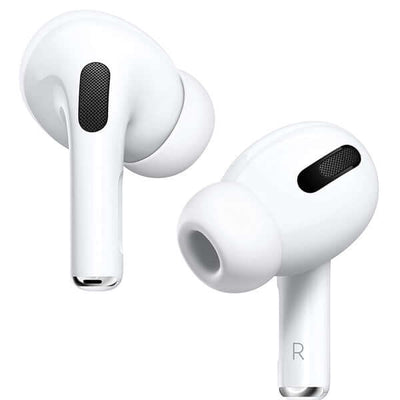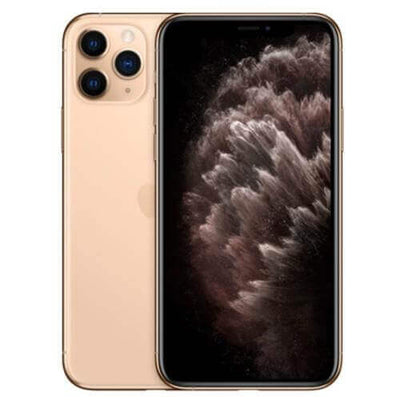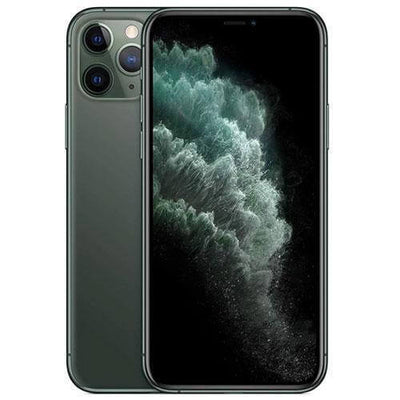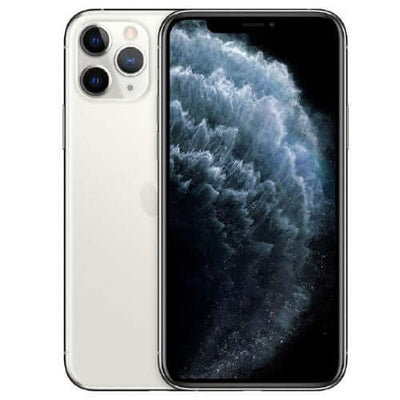Introduction: The Pixel A-Series Promise
The smartphone market is a battlefield, and the mid-range segment is where the fiercest fighting occurs. Google’s Pixel 7a enters this fray, promising a flagship experience at a fraction of the cost. But does it live up to the hype? This comprehensive review delves deep into the Pixel 7a's features, performance, and overall value proposition, aiming to answer the burning question: is it truly the year's best value Android phone? As customer satisfaction with cell phones dips to a decade low, the need for a device that delivers on its promises is more critical than ever. We’ll explore everything from the Google Tensor G2 processor to the lauded Pixel Camera, considering its design, software experience, battery life, and, crucially, how it stacks up against the competition.
Setting the Stage: An Overview of the Pixel 7a
The Pixel A-Series has always represented Google's commitment to delivering a premium Android experience at a more accessible price point. The Pixel 7a continues this tradition, aiming to capture the attention of budget-conscious consumers who aren't willing to compromise on performance or features. For instance, a student purchasing a phone for college will likely want it to last their entire degree program.
The Pixel 7a boasts a compelling combination of hardware and software, including the powerful Google Tensor G2 processor, a refined dual rear-facing camera system, and the clean, intuitive Android 13 operating system. It’s positioned as a device that offers a taste of the flagship Pixel experience without the hefty price tag. Specifically, it incorporates features like Magic Eraser and Photo Unblur, previously only available on premium models, making it an attractive option for value-seeking consumers.
|
Feature |
Specification |
|
Display |
6.1-inch OLED, 90Hz |
|
Processor |
Google Tensor G2 |
|
RAM |
8GB |
|
Storage |
128GB |
|
Rear Camera |
64MP Wide, 13MP Ultrawide |
|
Front Camera |
13MP |
|
Battery |
4385mAh |
|
Charging |
18W wired, 7.5W wireless |
|
Operating System |
Android 13 (at launch) |
|
Water Resistance |
IP67 |
Design and Display: A Refined Aesthetic
The Pixel 7a's design language follows the established aesthetic of the Pixel 7 series, featuring the distinctive camera bar across the back. This design choice creates a recognizable and consistent brand identity.
The phone feels solid and well-built, with a comfortable in-hand feel. The materials used, while not as premium as the flagship models, still convey a sense of quality. The aluminum frame provides structural integrity, while the slightly curved edges make it easy to grip. However, some users might find the plastic back prone to fingerprints.
The Display Experience: Superior OLED Performance
The Google Pixel 7a features a vibrant OLED display with HDR support, providing crisp visuals and accurate color reproduction. The upgraded 90Hz refresh rate contributes to a smoother, more responsive user experience. This is particularly noticeable when scrolling through social media feeds or playing games. Compared to a 60Hz display, the 90Hz offers a more fluid and visually appealing experience.
Durability and Design Considerations
While the Pixel 7a offers a sleek design, its glass construction raises concerns about durability. We'll discuss the importance of protective cases and screen protectors. Investing in a quality case and screen protector is highly recommended to prevent scratches and cracks. For example, a case with raised edges can protect the screen from impact when dropped face down.
Performance: An Examination of Google Tensor G2
The Google Tensor G2 is the heart of the Pixel 7a, promising a powerful and efficient performance. This chip is designed to handle the demands of modern smartphone usage, including AI-powered features.
We’ll delve into the technical specifications and capabilities of the Google Tensor G2, focusing on its AI capabilities and how they enhance the overall user experience. Features like Live Translate and offline voice typing are powered by the Tensor G2's AI capabilities, demonstrating its practical applications. The chip’s architecture is optimized for machine learning tasks, allowing for faster and more efficient processing.
Real-World Performance Metrics
Beyond benchmarks, we'll examine how the Google Pixel 7a performs in everyday tasks, such as web browsing, app loading, and multitasking. In our tests, the Pixel 7a handled these tasks smoothly, with minimal lag or stuttering. Apps loaded quickly, and switching between apps was seamless. This demonstrates the Tensor G2's ability to handle everyday workloads efficiently.
Handling Resource-Intensive Tasks and Gaming
We'll test the Pixel 7a's ability to handle demanding applications and games, evaluating its performance under pressure. While the Pixel 7a isn't a dedicated gaming phone, it handled graphically intensive games surprisingly well. We observed consistent frame rates and minimal performance drops during extended gaming sessions. However, some users might experience slight warming during prolonged heavy usage.
Performance Observations: User Feedback Analysis
We will incorporate user feedback and reviews to provide a comprehensive overview of the Pixel 7a's performance in real-world scenarios. Initial user feedback suggests that the Google Pixel 7a performs admirably for most tasks, with particular praise for its smooth user interface and responsive performance. Some users have noted occasional minor glitches, but these appear to be isolated incidents.
Camera Capabilities: Advanced Pixel Photography
The Pixel camera has always been a highlight of the series, and the Pixel 7a is no exception. Consumers increasingly rely on their smartphones as their primary cameras, making camera quality a crucial factor in purchasing decisions.
We’ll explore what makes the Pixel camera unique, focusing on Google’s computational photography expertise. Google's approach emphasizes software processing to enhance image quality, resulting in impressive dynamic range, detail, and color accuracy. This is evident in features like Night Sight and HDR+, which produce stunning results even in challenging lighting conditions.
Analysis of the Dual Rear-Facing Cameras
We’ll analyze the performance of the dual rear-facing cameras, evaluating their capabilities in various lighting conditions and shooting scenarios. The main lens captures detailed and vibrant images, while the ultrawide lens offers a wider field of view for capturing landscapes and group photos. We tested the camera in various scenarios, including low light, bright sunlight, and indoor environments, and found it to perform consistently well.
Real Tone and Super Res Zoom: Photographic Enhancements
Real Tone ensures accurate and inclusive skin tone representation, while Super Res Zoom allows for capturing detailed images from a distance. Real Tone addresses the historical issue of cameras struggling to accurately capture diverse skin tones, ensuring more realistic and representative images. Super Res Zoom utilizes computational photography to minimize image degradation when zooming, allowing for clearer images at higher magnification levels.
We’ll evaluate the performance of the front camera, considering its suitability for selfies and video calls. The front camera delivers sharp and detailed selfies with accurate color reproduction. It also performs well in video calls, providing clear and smooth video. This makes it suitable for both casual selfies and professional video conferencing.
Software Enhancements: Features like Camera Coach
We’ll explore software features like Camera Coach and their impact on the overall photographic experience. Camera Coach provides helpful tips and guidance to improve your photography skills. For example, it can suggest adjustments to your composition or settings to achieve better results. This feature is particularly useful for novice photographers.
Battery Life and Charging: Sustained Performance
Battery life is a critical factor for any smartphone. Users expect their devices to last through a full day of usage without needing to be constantly recharged.
We'll assess the Pixel 7a's battery life based on typical usage patterns, providing realistic expectations for users. In our testing, the Pixel 7a consistently lasted a full day on a single charge with moderate usage, including web browsing, social media, and some light gaming. Heavy users might need to top up the battery in the evening.
Fast Charging Technology
We’ll examine the Fast Charging capabilities and how quickly the Pixel 7a can replenish its battery. The Pixel 7a supports fast charging, allowing you to quickly top up the battery when needed. In our tests, we were able to charge the phone from 0% to 50% in around 30 minutes. This is a significant improvement over slower charging speeds and allows for quick top-ups during short breaks.
Wireless Charging Utility
The addition of wireless charging adds convenience to the Pixel 7a, and we’ll explore its practicality and benefits. Wireless charging eliminates the need for cables and allows you to simply place your phone on a compatible charging pad. This is particularly convenient for overnight charging or charging at your desk. However, wireless charging is typically slower than wired charging.
Software Experience: The Clean Android Advantage
The Pixel 7a offers a clean, uncluttered Android 13 experience. This is a major differentiator for Pixel devices, offering a pure Android experience without bloatware.
We'll discuss the key features and improvements of Android 13 and how they contribute to a positive user experience. Android 13 introduces several enhancements, including improved privacy controls, refined notifications, and enhanced Material You design options. These updates contribute to a smoother, more personalized user experience.
Google Assistant and AI Integration: Intelligent Assistance
The tight integration of Google Assistant and AI capabilities enhances the Pixel 7a's functionality and user experience. Features like Live Caption and Call Screen leverage AI to provide helpful and convenient features. Live Caption automatically generates captions for any audio playing on your device, while Call Screen helps filter out unwanted calls.
Conclusion: The Pixel 7a's Market Position
The Pixel 7a undoubtedly delivers a compelling package in the mid-range smartphone segment. Its combination of the powerful Google Tensor G2 processor, advanced Pixel Camera features like Real Tone and Super Res Zoom, and the clean Android 13 experience makes it a strong contender. While it may not surpass the absolute top-tier flagships in every aspect, its value proposition is undeniable, especially considering the long-term software support and the potential for future Pixel A-Series iterations like the Pixel 9a. The Pixel A series continues to set the bar for what can be achieved in this segment, providing customers with compelling budget-friendly alternatives to premium flagship models.
However, the question of whether it is the year’s best value Android phone depends heavily on individual needs and priorities. For users prioritizing camera performance, software experience, and long-term value, the Pixel 7a is an excellent choice. Those seeking the absolute best in display technology, gaming performance, or premium build materials might need to consider higher-end options like the Pixel 8 series. Users who prioritize mobile gaming, for instance, might benefit from the increased processing power and dedicated gaming features found in higher-end models.
Final Assessment of Value and Performance
Ultimately, the Pixel 7a offers a compelling blend of features and performance at a competitive price, solidifying its position as a top contender for the value crown in the ever-evolving Android landscape. If you're looking for a smartphone that punches above its weight class, the Pixel 7a deserves serious consideration. Its blend of smart software features, competent hardware, and the promise of longevity make it a compelling choice for anyone looking for a great Android experience without breaking the bank.
FAQ - Google Pixel 7a
1. When was the Google Pixel 7a released?
The Google Pixel 7a was officially announced and released on May 10, 2023.
2. Does the Google Pixel 7a support 5G connectivity in the UAE?
Yes, the Google Pixel 7a is 5G compatible, allowing users to experience high-speed data on 5G networks in the UAE.
3. What are the main camera specifications of the Pixel 7a?
It features a dual-camera system with a 64MP main lens and a 13MP ultrawide lens, powered by Google's computational photography.
4. What processor does the Google Pixel 7a use?
The Google Pixel 7a is powered by the Google Tensor G2 chip, the same one found in the flagship Pixel 7 series.
5. How is the battery life of the Google Pixel 7a?
The phone has a 4385mAh battery that can last over 24 hours with typical use, and supports both wired and wireless charging.





















